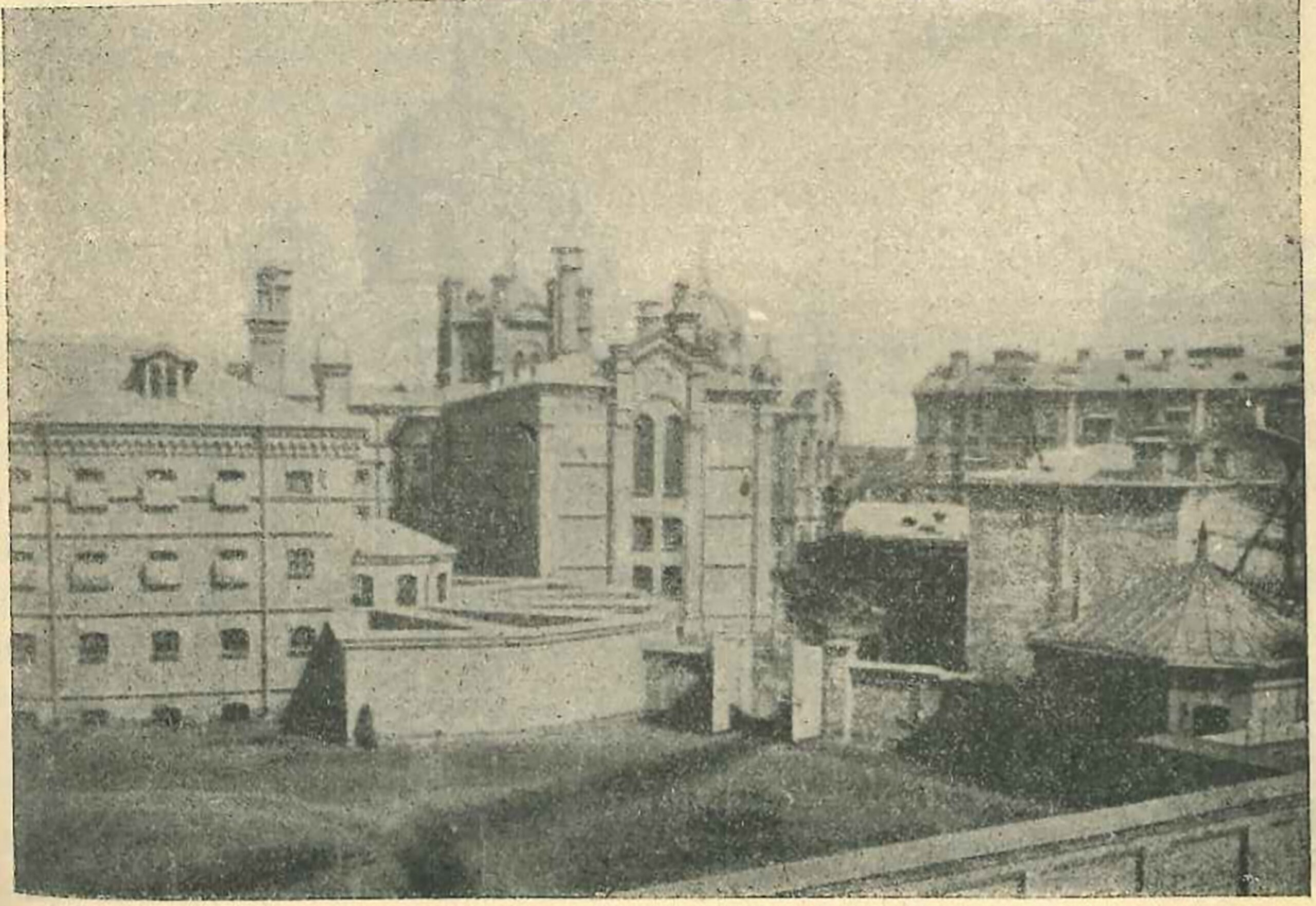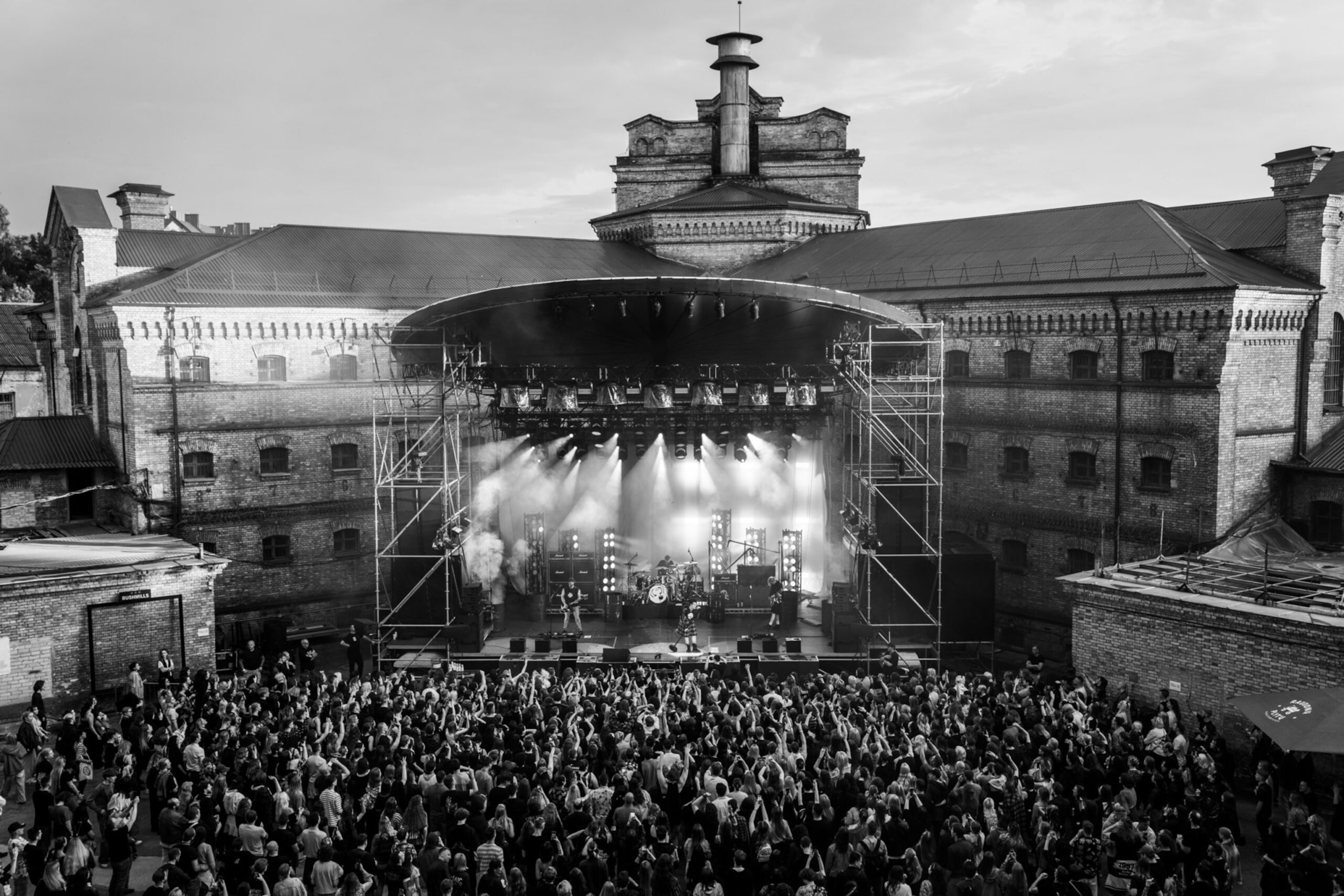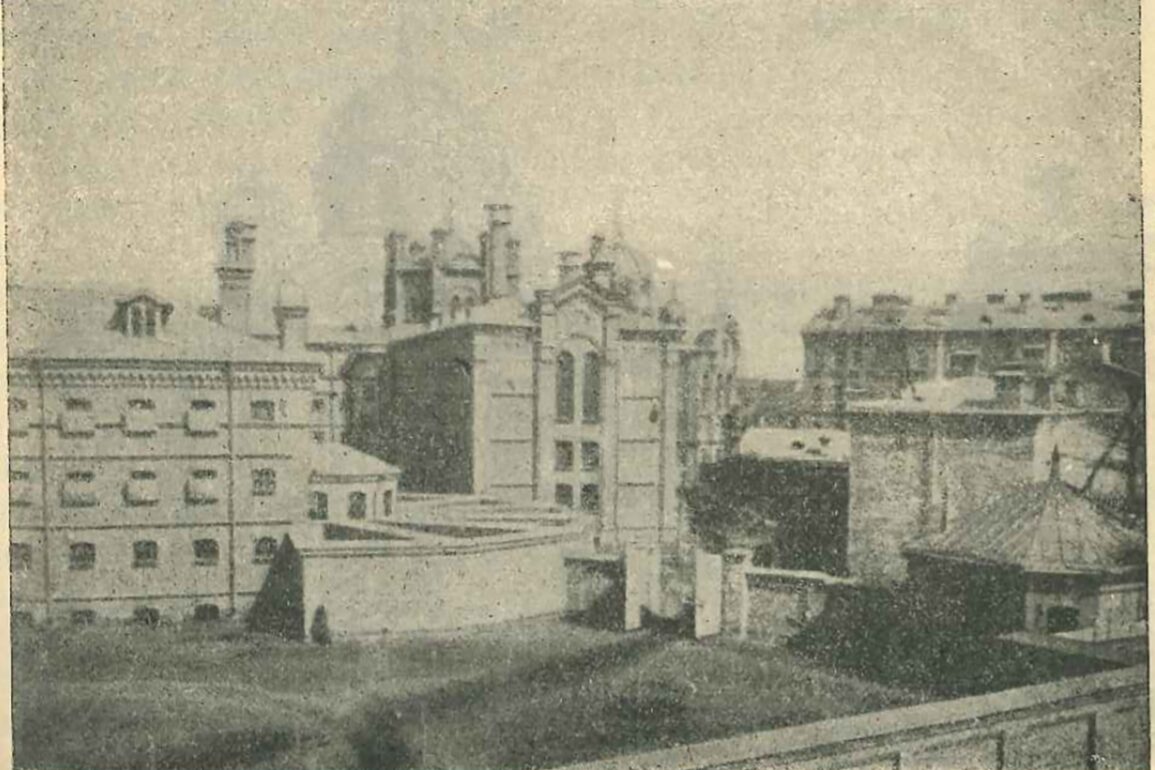Looming in the heart of Vilnius, Lithuania, Lukiškės Prison stands as a stark reminder of the country’s horrific past. The prison’s site was once home to a Roman Catholic monastery transformed into a small jail in 1837. Due to its overcrowding and deteriorating conditions, the prison was redesigned into a modern, high-security penitentiary and reopened in 1904.
This fortress of brick and stone has borne witness to some of Eastern Europe’s darkest historical moments, such as jailing political dissidents, who had fallen afoul of shifting political regimes—from Russian Tsars to Soviet authorities.
Since then, the prison has undergone a transformation that would have been unimaginable to its former occupants. Today, known as Lukiškės Prison 2.0, it is an epicenter of culture and creativity, where immersive events, art installations, and music festivals take place within its once formidable walls. Lukiškės Prison offers a journey into the unexpected—a testament to the resilience of a place and the people determined to repurpose it, rather than tear it down.
In 2022, the infamous prison was thrust into the spotlight when it became a filming location in the fourth season of the Netflix series Stranger Things, used as a Soviet prison where Chief Jim Hopper is held captive.
From Imperial cells to Soviet stronghold
Before its Netflix cameo, the story of Lukiškės Prison began during the rule of the Russian Empire. Tsarist authorities constructed the prison to quell resistance in Vilnius, known for its cultural and political diversity. It was a crossroads of political empires for centuries and it grew to become a place where Lithuanians, Poles, Belarusians, Russians, and Jews coexisted within its borders. A safe haven for a melting pot of ethnicities, languages, religions, and political ideologies, Lithuania ultimately rebelled against Russian rule.
During the early 20th century, Lukiškės Prison became a bleak home to political dissidents and criminals alike, cementing its reputation as a place of dread. Torture, rape, and murder were common in this prison that housed both men and women. Their screams could be heard not only by other prisoners (as a warning) but to Lithuanians walking nearby. The penitentiary offered no privacy or care, but prisoners were allowed to shower once a week.

Possibly taken between 1904 and 1908, this photo may have been the first to capture Lukiškės Prison after it was built in the early 20th century. It shows two prison buildings with adjacent exercise yards and a portion of the prison wall. Photograph Courtesy Vinogradov, Aleksandr, 1905. Putievoditel ́po gorodu Vil ́nie i iego okriesnostiVilna: Tipografiia Shtaba Vilenskogo Voiennogo Okruga
Before the Electronic Age (the 1940s), guards kept an extra tight watch on prisoners, and its high walls and maze-like layout made escape nearly impossible.
By the time the Soviet Union took over in 1940, Lukiškės was already notorious. Under Stalin’s rule, it became even more crowded, as thousands of Lithuanians—nationalists, intellectuals, and those who refused to conform to Soviet ideology—were arrested and incarcerated here.
During the Nazi occupation of Lithuania, the Gestapo used the prison was used by the Gestapo to corale thousands of Jews and members of the Polish resistance before they were moved to Ponary (on the outskirts of Vilnius), where they were executed during World War II.
A new era and an unlikely transformation
Lukiškės continued its function as a high-security prison until its closure in 2019, when Lithuania was well into its independence from the Soviet Union, and the prison was seen as a relic of an era best left behind. According to tour guides, its conditions were subpar; cells were overcrowded, and ventilation was poor, according to tour guides.
But instead of demolishing this bleak monument, Lithuania chose a different path. Recognizing the prison’s historical significance and unique structure, city planners and politicians saw an opportunity to breathe new life into its empty halls. The idea was radical yet simple: why not turn this place, once a symbol of oppression, into a space for creativity and self-expression? This approach echoed the country’s desire to remember its past while embracing a future rooted in innovation and cultural exploration.
“Lithuanians are happy about the transformation. Not only is it unlike anything else for tourists to experience, but our cultural heritage has been immortalized and reimagined in a spectacular way,” says Milisenta Miseviciute, a Vilnius tour guide for nearly 20 years.
When visiting the abandoned prison, guests can explore the labyrinthine cell blocks and feel the chill of history in the air. Guides (some former prison guards) lead visitors through dark corridors and rows of cells with barred windows—each a stark, confining space barely wide enough for a simple bunk and small desk.
Some cells have been left untouched, but guests taking a tour have the opportunity to view a suicide room, which shows what it may have looked like after a prisoner took their life—not an uncommon occurrence in this home of horrors and psychological tortures. During a tour, prison guides describe how isolation was used as a form of punishment, enhancing the oppressive atmosphere that grips visitors in this part of the prison.
“Prisoners were living in extremely small cells. Each person on average had only from 1.81 to 2.71 square meters of personal space. There was also poor-quality food, limited daylight from small windows, a 15-minute shower once a week, and only one hour of outdoor time in an enclosed yard,” explains Martynas Butkevičius, co-owner of Lukiškės Prison 2.0.
Festivals and art in a haunting venue
In 2021, Lukiškės reopened its doors—this time as a cultural venue. Today, it hosts a wide range of events, from art exhibits to live music performances from local artists such as Aklì and King Gizzard & the Lizard Wizard.
Many of the prison’s cell blocks are now transformed into makeshift galleries, showcasing modern art that often draws inspiration from Lithuania’s history.




Lukiškės Prison was transformed in 2021, which included turning cell blocks into makeshift galleries. Now known as Lukiškės Prison 2.0., the former prison hosts art exhibitions and live music performances like this concert featuring the Doncaster-born rock star Yungblud. Photograph Courtesy Lunatikai
The complex, spanning nearly 200,000 square feet, is currently home to over 550 resident artists, working across various creative disciplines, including music, visual arts, design, dance, film, and handcrafts.
“As an artist who transforms everyday objects and gives them new meaning; Lukiškės Prison 2.0 is a perfect place for me to create. I am glad to be a part of the conversion, which will give this building new functions and change its story,” says Lithuanian artist and Vilnius resident Jolita Vaitkutė. “When I first came to my current studio space, the prison canteen, I saw a possibility. Now, it has no other meaning than my studio — it’s already been converted into a bright and inspirational place.”
Lukiškės starring role in Stranger Things
Beyond the art and music performances, the former prison doubles as a film set. In 2022, Lukiškės Prison became a filming location for the hit Netflix series Stranger Things. The prison’s raw, Gothic aesthetic proved the perfect replica of what a Soviet prison would be like, allowing viewers to experience the sense of dread that Lukiškės once inspired in real life. For Lukiškės, this was more than just a cameo; it became a pivotal moment in its reinvention, introducing it to a global audience.
How to get to Vilnius and take a Lukiškės Prison tour
Americans who want to visit the famous prison will have to make a stop in Europe where there are direct flights to Vilnius International Airport via airlines such as British Airways, Lufthansa, and Ryanair. Travelers can fly to a nearby city like Frankfurt and then catch a short flight to Vilnius from there.
Visitors can grab a taxi or rideshare from downtown Vilnius to get to the prison. It’s only two miles away. Visitors interested in a guided tour of the prison can purchase tickets in advance on the Lukiškės Prison 2.0 website. Two-hour tickets start at $16 (15 euros) for a day tour and $21 (20 euros) for a night tour. Afterward, guests can grab a beer and a snack at one of the food trucks stationed outside of the prison and contemplate the history and stories revealed during the guided tour.
Visit this Facebook page for more information about upcoming scheduled events hosted at the prison.
This post was originally published on this site be sure to check out more of their content.







